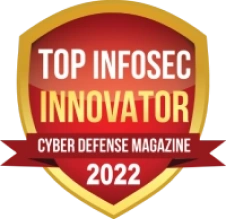PAM vs Traditional Access Management
When it comes to securing digital environments, both Privileged Access Management (PAM) and Traditional Access Management (AM) play vital roles. However, they serve different purposes and address unique aspects of cybersecurity. Understanding these differences is critical for implementing a comprehensive security strategy.
- Scope of AccessTraditional Access Management focuses on providing employees and users with access to resources based on their roles within an organization. This is commonly referred to as Role-Based Access Control (RBAC). It ensures that users have the right level of access to do their jobs—no more, no less. Examples include granting access to email accounts, cloud-based storage, or internal software tools.
Privileged Access Management, on the other hand, zeroes in on the accounts and credentials that hold elevated permissions. These "privileged accounts" are typically used by IT administrators, developers, or executives to access critical systems such as databases, servers, and network configurations. These accounts are more powerful and, therefore, more attractive targets for cybercriminals.
- Security Risks AddressedTraditional Access Management aims to prevent unauthorized access by enforcing policies, such as password requirements or multi-factor authentication (MFA),for regular users. While this reduces the risk of breaches, it doesn’t fully address insider threats or advanced attacks that target privileged accounts.
PAM goes a step further by offering granular controls and monitoring over privileged accounts. It mitigates risks such as insider misuse, accidental damage, and external hacking attempts. Features like session recording, just-in-time (JIT) access, and credential vaulting are designed to ensure that privileged accounts are only used securely and appropriately.
- Monitoring and AuditingTraditional Access Management often lacks robust monitoring capabilities. It may track login attempts or generate basic access logs, but it does not provide detailed insights into user activity. PAM solutions excel in monitoring and auditing. They record privileged sessions, log commands executed during access, and flag suspicious activities in real-time. This level of visibility is essential for detecting potential threats and meeting compliance standards, such as GDPR, HIPAA, or PCI DSS.
- Implementation ComplexityTraditional Access Management systems are relatively easy to implement, focusing on user directories and role assignments. PAM systems, however, require more planning and resources due to their integration with critical systems and advanced security features. The extra effort is justified by the enhanced protection they provide.
Core Features of PAM Solutions
Privileged Access Management (PAM) solutions are designed to safeguard sensitive systems, applications, and data by managing and securing privileged accounts. Unlike traditional access management tools, PAM solutions offer specialized features tailored to the unique challenges of securing elevated permissions. Below are the core features that make PAM solutions indispensable for modern cybersecurity.
- Credential Vaulting and ManagementOne of the foundational features of PAM solutions is credential vaulting, which involves securely storing privileged credentials in an encrypted vault. This ensures that sensitive passwords, SSH keys, and other authentication data are not exposed to unauthorized users. PAM systems can automatically rotate credentials after use, reducing the risk of compromise.
Credential management also extends to enforcing strong password policies, ensuring that passwords are unique, complex, and updated regularly. By eliminating the need for administrators to memorize or manually handle passwords, PAM solutions enhance both security and efficiency.
- Session Management and MonitoringPAM solutions provide robust session management features to track and control privileged account activity. This includes session recording, real-time monitoring, and the ability to terminate sessions if suspicious behavior is detected. Session logs can be used for audits, compliance reporting, or forensic investigations after an incident.
Session monitoring ensures that all privileged actions are visible, reducing the likelihood of misuse or unauthorized access. This feature is particularly valuable in identifying insider threats or compromised accounts.
- Just-in-Time (JIT) Privileged AccessJust-in-Time access is a key capability of PAM solutions that allows users to gain elevated privileges only when necessary and for a limited period. Instead of granting standing access, PAM systems provide temporary credentials or access tokens that expire after the task is completed. This minimizes the attack surface and reduces the risk of privilege escalation.
- Least Privilege EnforcementPAM solutions are designed to enforce the principle of least privilege, ensuring that users only have access to the resources and permissions required to perform their specific tasks. By limiting access rights, organizations can significantly reduce the risk of accidental or intentional misuse of privileged accounts.
- Privileged Account DiscoveryPAM solutions often include automated tools to discover and inventory all privileged accounts within an organization. This feature helps identify orphaned accounts, shared credentials, and unused permissions that could pose security risks. By gaining full visibility into privileged access, organizations can take proactive measures to secure their environments.
- Multi-Factor Authentication (MFA) for Privileged AccountsTo add an additional layer of security, PAM solutions integrate multi-factor authentication (MFA) for privileged accounts. This ensures that even if credentials are compromised, unauthorized access is prevented unless the secondary authentication factor is verified.
- Compliance and ReportingPAM solutions include robust compliance and reporting tools to help organizations meet regulatory requirements such as GDPR, HIPAA, or PCI DSS. Detailed audit logs, real-time alerts, and customizable reports make it easier to demonstrate compliance and identify areas for improvement.
Best Practices for Effective PAM Implementation
Implementing Privileged Access Management (PAM) is a critical step in enhancing your organization’s cybersecurity defenses. However, achieving maximum effectiveness requires careful planning and adherence to best practices. Below are the key strategies for successful PAM implementation, ensuring both security and operational efficiency.
- Conduct a Privileged Account Inventory The first step in implementing PAM is to identify all privileged accounts within your organization. This includes administrative accounts, service accounts, application accounts, and even hardcoded credentials in scripts or applications. Conducting a thorough inventory ensures no privileged access points are overlooked, reducing potential vulnerabilities.
- Enforce the Principle of Least Privilege The principle of least privilege is fundamental to PAM. Users and applications should only have the minimum permissions necessary to perform their tasks. By reducing the access rights of privileged accounts, you limit the potential damage from a compromised account or insider threat.
- Use Credential Vaulting and Rotation Securely store all privileged credentials in a PAM solution’s encrypted vault. Implement automatic password rotation to minimize the risk of stolen or reused credentials. Regularly updating passwords ensures that even if credentials are exposed, they quickly become useless to attackers.
- Implement Multi-Factor Authentication (MFA) Requiring multi-factor authentication for all privileged access adds an essential layer of security. Even if credentials are stolen, attackers cannot gain access without the secondary authentication factor. This significantly reduces the risk of unauthorized access to critical systems.
- Deploy Just-in-Time (JIT) Access Avoid granting permanent privileged access by using Just-in-Time access mechanisms. PAM solutions can provide temporary access for a specific task or duration, with credentials expiring once the task is complete. This minimizes the attack surface and ensures access is granted only when absolutely necessary.
- Monitor and Record Privileged Sessions Real-time monitoring and session recording are critical for detecting and responding to suspicious activity. PAM solutions should provide detailed logs of all privileged account actions, enabling swift forensic analysis in the event of a breach. Alerts for unusual behavior further strengthen security.
- Automate Privileged Account Discovery Use automated tools to continuously discover and track privileged accounts across your organization. This ensures that new accounts or changes to existing accounts are immediately identified and secured. Automated discovery also helps in detecting orphaned accounts that pose security risks.
- Regularly Audit and Review Access Rights Periodic audits of privileged access rights are essential for maintaining security. Review who has access to what, assess whether access is still necessary, and revoke any unused or unnecessary privileges. These audits also help ensure compliance with regulatory requirements.
- Provide Training and Awareness Human error is a common weak point in cybersecurity. Train administrators and privileged users on the importance of secure practices, such as avoiding credential sharing and recognizing phishing attempts. Awareness ensures that users align their behavior with your organization’s security policies.
- Plan for Scalability and Integration Choose a PAM solution that integrates seamlessly with your existing IT infrastructure and scales with your organization’s growth. Effective integration ensures that PAM becomes a natural part of your workflows rather than an obstacle.
- Establish Incident Response Protocols Prepare for potential incidents by defining clear response protocols for privileged account compromises. Ensure that your PAM solution supports rapid revocation of access and provides actionable insights for containment and recovery.






